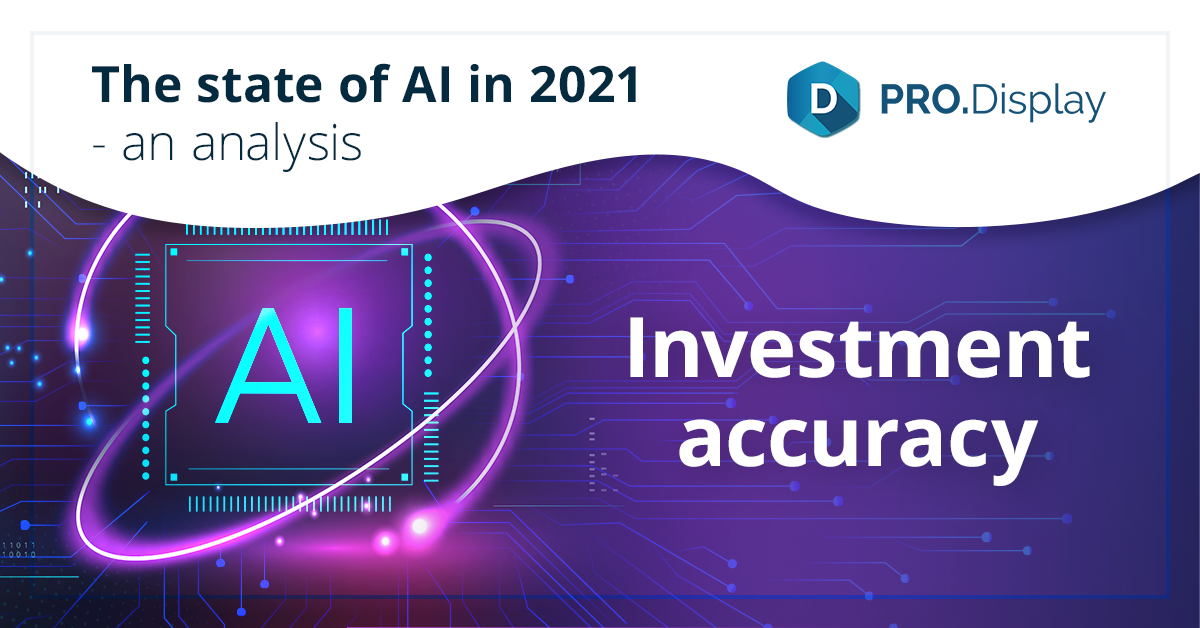In December 2021 McKinsey published a report entitled “The State of AI in 2021”. This article is part of my subjective analysis of this publication. You can find the key conclusions at this link - I will also provide links to other parts of the analysis.
Respondents whose organizations use AI to a lesser extent are far more likely to underestimate the costs associated with AI implementation.

Based on McKinsey report "The state of AI in 2021".
This phenomenon coincides with our experience.
More experienced clients estimate the costs of AI implementation more accurately, and at the same time they consider the sources of savings or profits generated by this technology more accurately.
Here are a couple of examples of such benefits, based on our project experience: time saved on data collection during in-store visits, increased distribution and product availability, proper exposition (which translates into increased sales), and increased shelf-shares. More experienced clients also better understand how data reliability influences their business.
AI implementation, especially in the retail industry, often goes hand in hand with a paradigm shift in the functioning of the organization, changing the source of data from being entered manually (most often declaratively) to an automatic with the use of reliable AI. In projects, this moment is often the most critical for clients. In many cases, it means a significant decrease in reported quality KPIs, by 50% or more. Not every manager or even every organization is ready to face such a new world order, the reality and truth about his company’s presence on the market. However, this new, real market picture has finally reliable data. After all, it is extremely difficult to make the right decisions based on incorrect data. Organizations which can accept such new business “catharsis” rapidly move on to effective and conscious actions and observe positive changes in their company and its market situation.
In the past, we have repeatedly observed how convenient it is to stay in a virtual world, where almost all KPIs are reported subjectively and create an idealized picture of the market. On the other hand, we have also observed the opposite kind of behavior, especially when conscious questions arise, which give context to the reality that has been built based on manual reports. Since we operate so efficiently in a broadly understood market, how is it possible that our sales figures are not increasing as fast as we would like them to? The answer to this question may be sought in various ways. In our experience, the best solution is to boldly verify the current data and information. However, this requires one to take advantage of new tools and methods to gather data and then compare it with past performance. The easiest and most effective way to do that is to launch a pilot study supported by AI. This provides an opportunity to evaluate new tools, adjust the data describing the market situation, make effective decisions and take reasonable actions.
Allow me to cite a recent example. We have a client who assumed that the mere action of taking a photo of the exposition at the point of sale and sending it to HQ means that it has been implemented to conform to the standard his company expects. After conducting a pilot study and verifying over 4000 expositions via our Photo Recognition system, it turns out that only 60% of those meet the standard. From this study, the client has also learned what the reasons behind the low level of execution of the standard were in reality, by means of detailed information about the level of implementation of each element that make up the standard, including, for example, the proper presence of promotional products, the proper implementation of POS materials, proper communication prices, etc. The client was able to diagnose which element required special attention and implemented the tasks the right way as a result.
By observing the market and the following changes within, I believe that only organizations that have the courage to change and are ready to do so are able to see the real picture of the market and thus make real business decisions based on solid foundations. We can observe such actions among our clients increasingly often. The market is becoming more difficult all the time and being stuck in a virtual reality full of beautiful KPIs may be tempting, but it does not really pay off, especially in the medium to long term.
Here, I would like to smoothly refer to the topic of the article – as it is easy to imagine that a change in the paradigm of the organization’s functioning meets a certain amount of resistance (as any change usually does), especially at the first two stages of introducing such a change, i.e. Denial and Resistance. The desire to remain in the comfort zone of the organization is so strong that there are many counter-arguments to the seemingly obvious need to change the reporting method. One of these counter-arguments, as confirmed by a McKinsey report, is that “AI implementation requires additional investment, and will not bring any profit. Anyway, our current solutions work well”.
Going back to the costs of implementing AI, producing new AI models and maintaining the current ones, they can be introduced in stages. Among the clients who we have been working with for many years now, we may observe a strong trend related to the development of the number of parameters that the Image Recognition system (supported by AI) is supposed to control. A lot of them test the technology and its usability, starting with the examination of several parameters. Then, after obtaining confirmation that this investment is profitable and that the business parameters are increasing, the clients increase the scale of projects and the number of parameters examined.
 Own study based on PBS data.
Own study based on PBS data.
The table above illustrates this process quite clearly, based on three selected clients over the past few years. Each of these clients started with the verification of several, or as in the case of Client A, a dozen or so parameters, and increased the number of them over time to several dozen - or even several hundred in the aforementioned case.
Since 2016, the average number of parameters tested per project has increased tenfold.
Of course the cost of measurement per parameter has also dropped significantly over the last few years, which means that hunger for information can be satisfied in an increasingly economical way.
With the development of AI awareness and the proportions of costs and benefits, organizations are also gaining new experience. It turns out that obtaining each new piece of information from the market is no longer connected with the additional work of their teams, as it would have been before. More reliable and broader knowledge of the market may now be acquired without the additional effort of operations departments or even freeing up working time. The knowledge acquired can be used to build a further competitive advantage - an advantage that can only be built by organizations who are ready to leave their comfort zone and depart from the paradigm of functioning in existing patterns.
👉 Follow us on social media to stay up to date:



